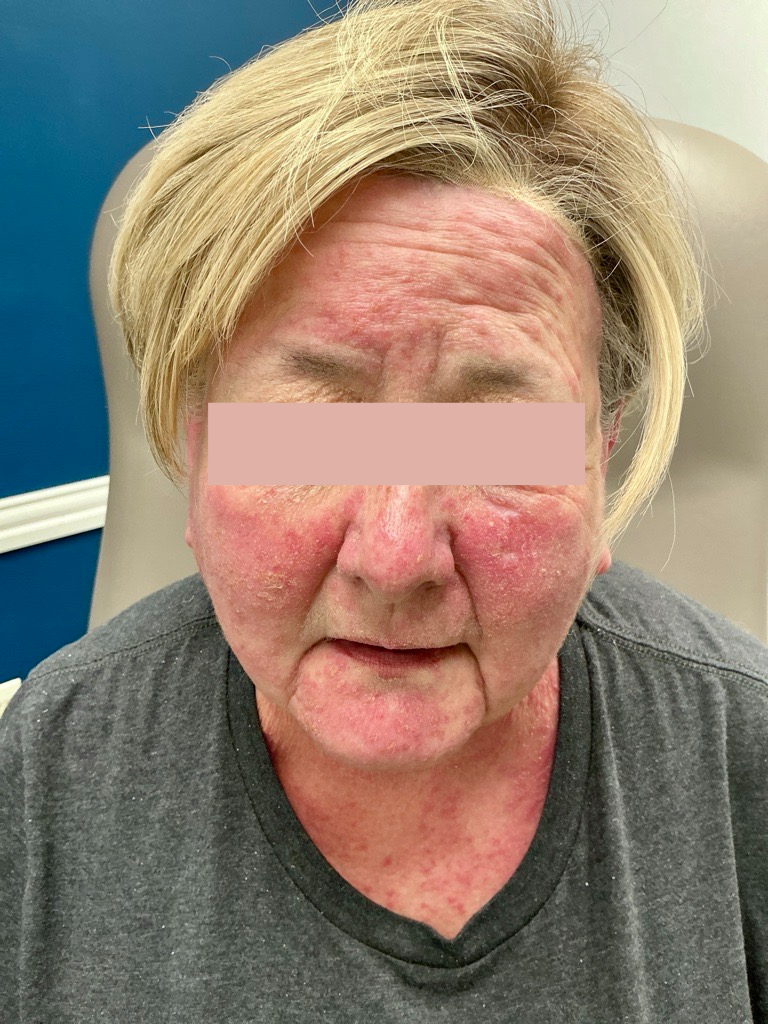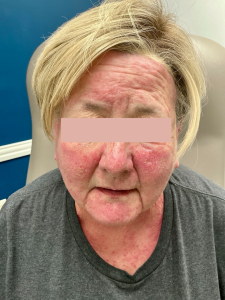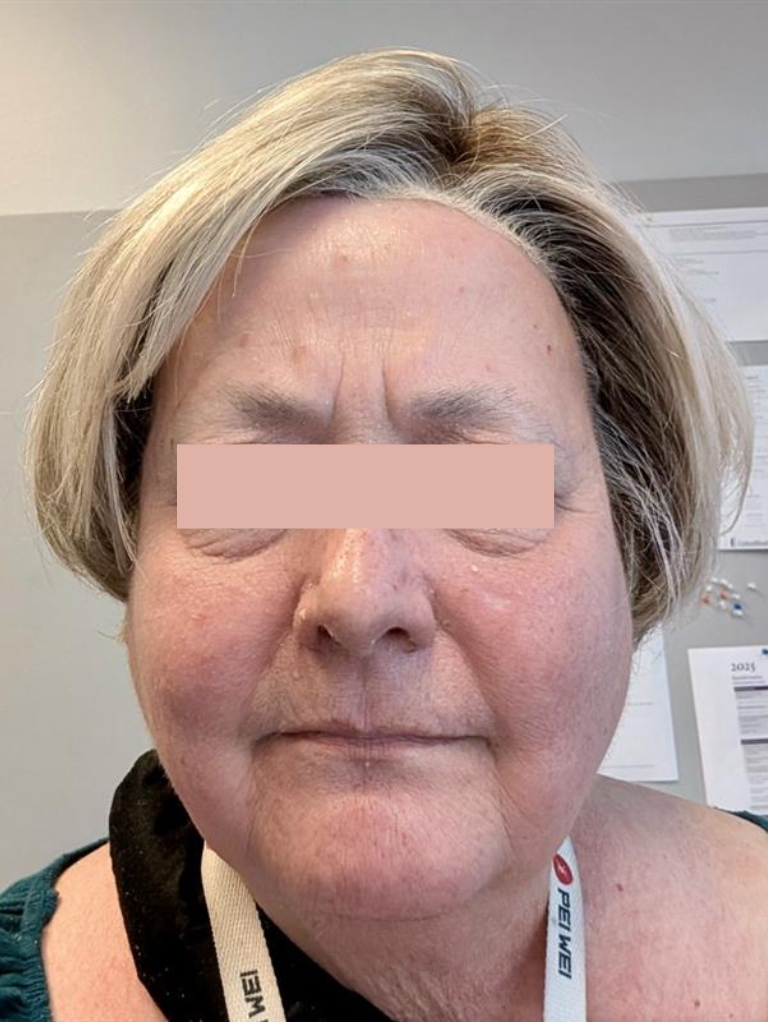

Our patient today is a woman in her early 60s undergoing treatment for metastatic colon cancer. Two months ago, she began panitumumab, an epidermal growth factor receptor (EGFR) inhibitor. About two weeks after her first infusion, she noticed a mild acneiform eruption on her chest. With each subsequent chemotherapy cycle, the rash worsened and spread to her face. More recently, she developed severe dry skin and eczema that became secondarily infected, requiring hospitalization for systemic antibiotics and steroids.
EGFR inhibitors like panitumumab interfere with skin cell growth and repair. This disruption often shows up as a rash that looks like acne but isn’t true acne. Unlike regular acne, EGFR rashes lack blackheads (comedones) and do not respond to standard acne treatments such as retinoids. Instead, they are a form of drug-induced folliculitis.
Panitumumab is a fully human monoclonal antibody that blocks EGFR. It was FDA-approved in 2006 for metastatic colorectal cancer in patients whose disease progressed after chemotherapy. Today, it is used in patients with wild-type RAS tumors as part of personalized colon cancer treatment plan.
The skin, hair, and nails depend on EGFR signaling for normal growth. When this pathway is blocked, a variety of toxicities can occur:
• Acneiform eruption – papulopustular rash on face, scalp, chest, and back (most common).
• Paronychia – painful swelling, redness, and infections around nails, often with pyogenic granuloma–like overgrowths.
• Xerosis (dry skin) – can be severe, with cracks and fissures, increasing risk of eczema like rash and secondary infection.
• Pruritus (itching) – often widespread and distressing.
• Hair changes – fine, brittle hair, altered curl pattern, excessive growth in unusual places (hypertrichosis), trichomegaly (long eyelashes).
• Mucosal toxicities – stomatitis or mucositis in some patients that present as irritation and sores inside the mouth.
• Skin fragility – photosensitivity, telangiectasia (tiny broken blood vessels visible on the skin surface) may occur with chronic use.
For this patient, we are managing the acneiform eruption and related skin toxicities with:
• Oral antibiotics (doxycycline or minocycline) for inflammation
• Topical clindamycin lotion on affected areas
• Gentle cleansers, non-comedogenic moisturizers, and daily sunscreen
• Short-term systemic antibiotics and corticosteroids for severe secondary infection
• Supportive skin barrier repair to reduce dryness and eczema risk
• After hospitalization and treatment, she is now doing much better, as shown in her after photo.

What does a panitumumab rash look like?
It typically appears as red, tender bumps and pustules on the face, chest, and back.
Is an EGFR rash the same as acne?
No. It only resembles acne but lacks blackheads and does not respond to acne products like retinols or benzoyl peroxide.
How is an EGFR rash treated?
With oral or topical antibiotics, skin-protective measures, and supportive care. Treatment is tailored to severity.
Does rash mean the drug is working?
Research suggests that patients who develop the rash often have better responses to EGFR inhibitors.